Typical costumes, traditional culture
Contents
Typical Customs
Each state in Mexico has a typical costume that represents its history and customs of each region. Take a look at the 5 most popular costumes in our country,
Veracruz
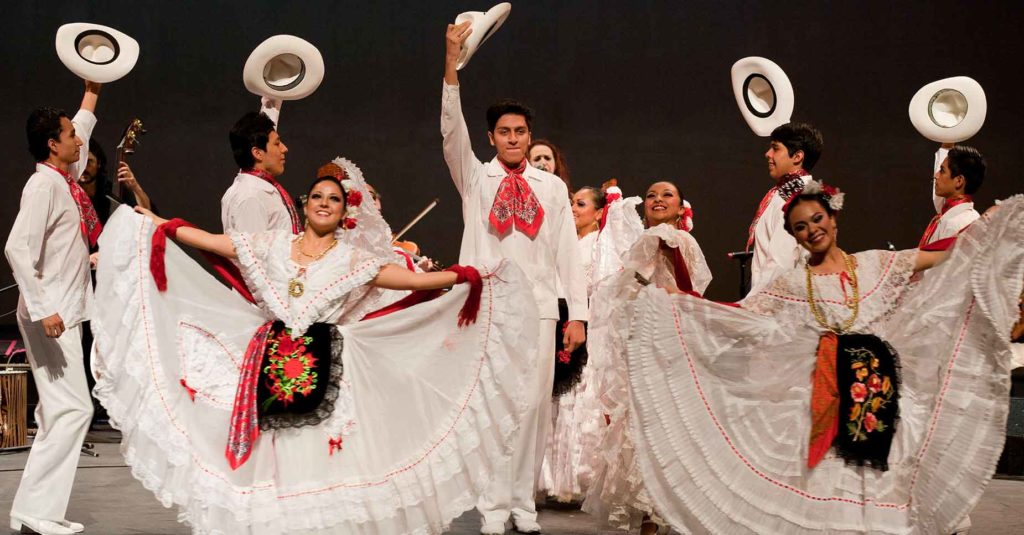
This costume has great Spanish influence because its origin dates from the New Spain period. In the southern area of the current state of Veracruz, Spanish women wore lush dresses. Over time, the Creoles adopted this version with thinner fabrics to cope more easily in their daily tasks, mainly in the fields.
The white color was very common among indigenous communities, as it was related to some purification rituals. Thus, the cultural mix gave rise to this beautiful costume.
After the Independence of Mexico, the ruffles in the dresses and the black apron with floral detail for women and the classic white guayabera for men became very popular, thus making the typical dress of the region, better known as jarocho costume.
Curious fact: The woman’s outfit includes a comb with flowers that are placed on the chongo (updo) and depending on the side is its meaning. On the right side it is worn by married women and on the left by single women.
Nayarit
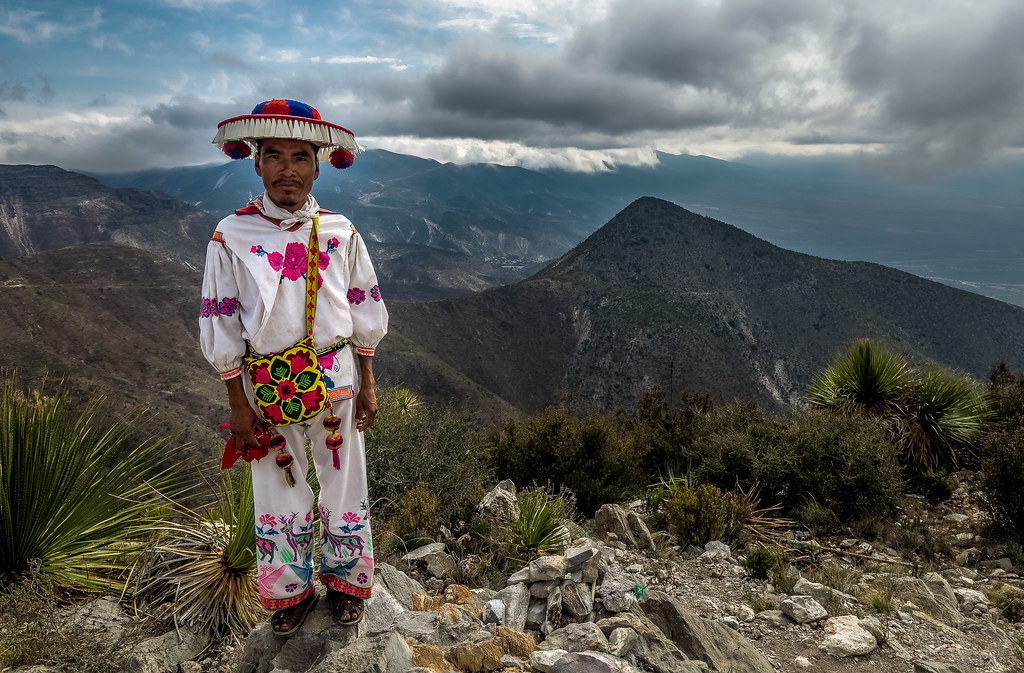
Among the most representative ethnic groups in Mexico today, are the Huichol or Wixarikas. Currently located in different regions of Nayarit, Jalisco, and Durango, they are characterized by capturing their age-old worldview in each of their traditions, especially in their clothing.
Both men and women carry embroidered fabrics, colorful bracelets and necklaces, and hand-woven bags or morrales. Among the main figures seen in their costumes are deer, that represents the creator of peyote and corn; the God’s Eye, which is a way to understand unknown things; fire, which is the most important divinity in their culture; and the eagle, that is the connection between the gods and man.
Curious fact: Morrales or bags have a huge relevance in this culture because depending on the color and the number of morrales a man carries, it is the rank he has among their community.
Oaxaca
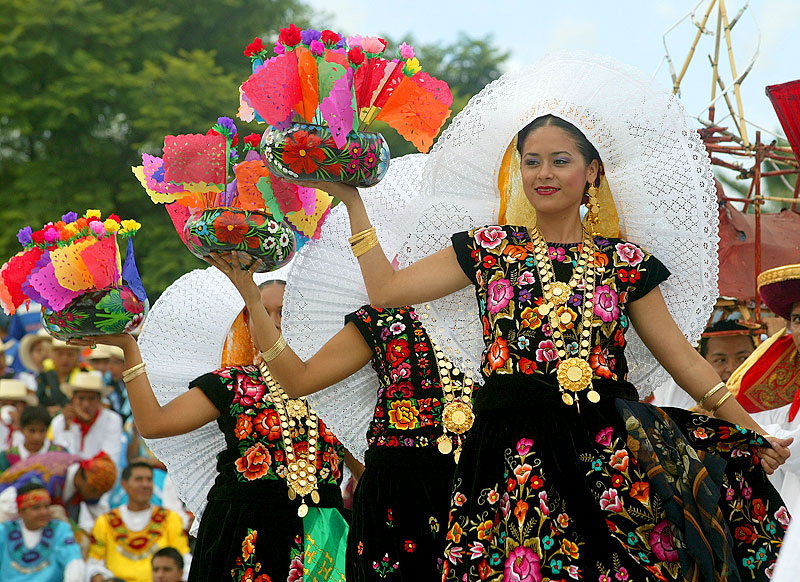
This typical costume from the Istmo de Tehuantepec, Oaxaca, is recognized worldwide for the beauty of its embroidery and is a clear example of the cultural mix that has occurred over the years in Mexico, as the inspiration taken from the Manila shawl and the ruffles originated in Holland.
Called Tehuana, it is made of three elemental pieces: the huipil or handmade blouse, and the skirt, both in black velvet or silk embroidered satin with colored flowers. Besides, the white ruffle is placed on the head for events or special occasions.
Curious fact: Frida Kahlo frequently wore this costume —she even has a self-portrait with it— since in the Istmo culture, matriarchy is a characteristic of the society, for this reason, the costume attracts the attention and enhance the leadership of women.
Jalisco
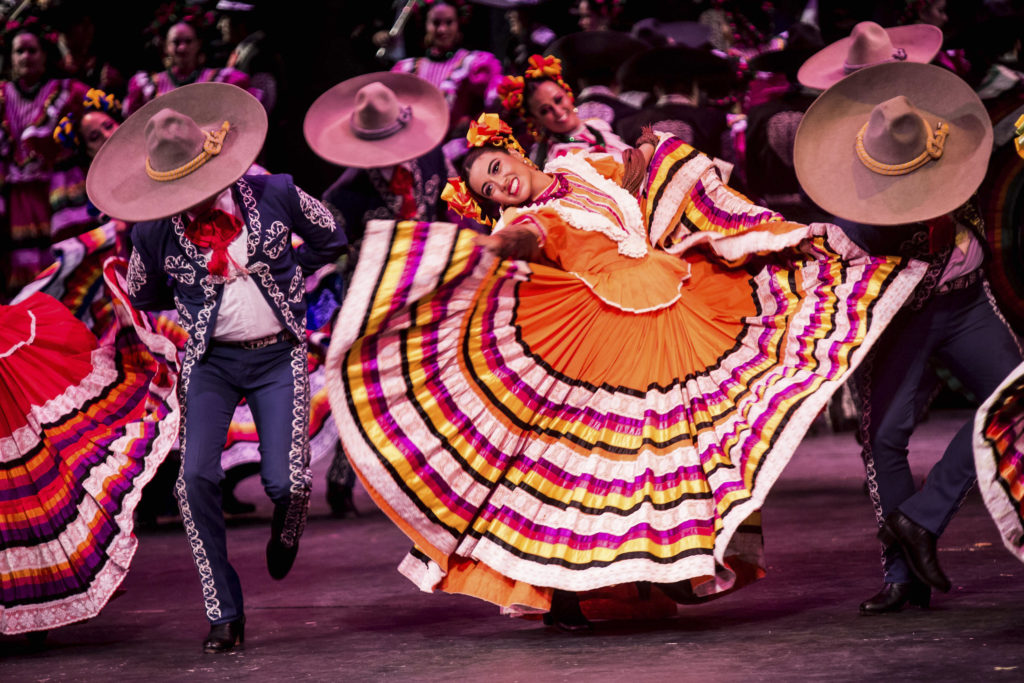
One of the most representative costumes in Mexico because of the Jarabe Tapatío, which has traveled around the world. Today this folk dance is very popular, but what is the origin of the costume?
With the arrival of the Spanish to New Spain, horse riding became a very popular activity and with it the origin of charrería, this is how the charro costume emerged: Tight trousers with silver buttons on the sides, a jacket with buttons on the front and contrasting embroideries, a white shirt with a bow-tie, boots and, of course, a wide-brimmed sombrero.
On the other hand, the woman stands out with colorful a colorful dress with many frills and adorned with colored ribbons, hair braided with ribbons that match the dress, large earrings, and very eye-catching makeup.
Curious fact: The charro costume is different from the mariachi costume, among other things, the main difference is the sombrero (hat). The charro sombrero has the front wing flat and the rear slightly raised, also it has four indentations on the top which give it more resistance, since it is used as a helmet in the charrería. On the other hand, the mariachi sombrero has two indentations on the top.
Yucatán
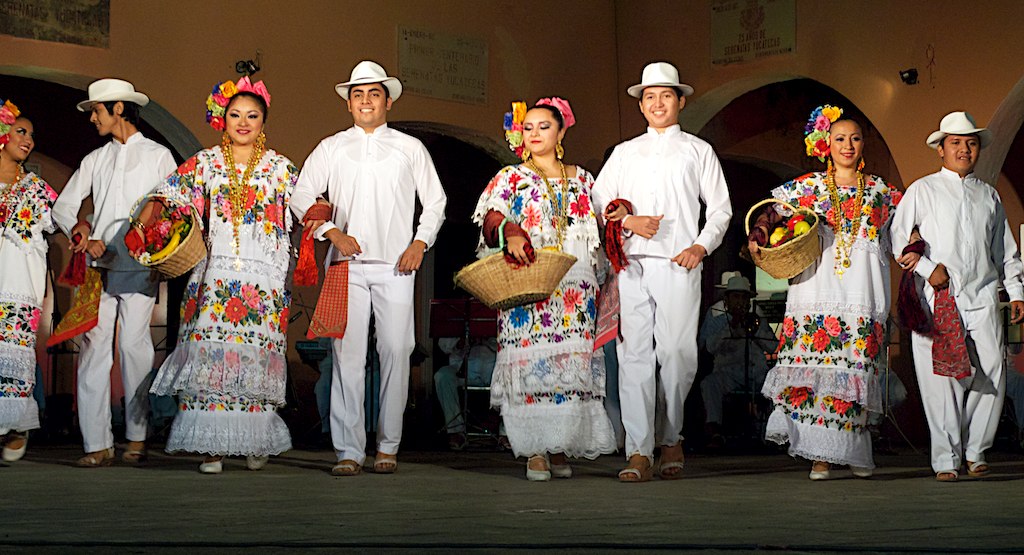
Since the age is the Mayans, embroidery on fabrics stands out in this region. Of course, with the cultural shock, the origin of the current typical Yucatán costume reflects the traditions and beliefs of the place.
The man wears guayabera and white trousers, elegant and perfect for the warm weather of Yucatán. It is also complemented by a white palmilla hat and a red scarf that is always placed in the right pocket of the trouser.
Women’s costume has more details and is made up of 3 pieces, known as terno. The first part is a square lapel of about 20 centimeters, then a huipil that reaches the knees and a fustán or skirt that reaches the ankles. Each piece has floral embroidery that stands out from the white fabric. This traditional costume is completed with jewelry such as necklaces, rosaries, and earrings.
Curious fact: The guayabera has its origin in Cuba and its original name was yayabera, as it was popular in the Yayabo River region of Cuba, but after its arrival to Mexico, its name changed to guayabera because the men placed guavas in his pocket.
The diversity of the typical costumes of Mexico is enormous since each state has its customs, which are reflected in its beautiful and traditional costumes.
.
.
Textile Art: 5 regions
The embroidery used in Mexican traditional customs, can be compared to authentic artwork due to its beauty, meaning and relevance within the traditions of this country.
The interweaving of threads always seek to reflect part of the stories, legends and cosmogony of the indigenous communities of each region, which have managed to survive through to our time. The techniques used by each ethnic group dates back to the pre-Hispanic era, passing down from generations to allow us the privilege to admire the delicacy of their work today.
We invite you to find more about the embroidery of 5 states, which are created with care by Mexican artisans and weavers.
Miraculous hands turn needs and fears into a vivid spirit: the work of popular art emerging from the biodiversity that takes part of their natural habitat.
— Popular Art Museum, Mexico City
Chiapas
Mainly huipiles, shirts and napkins emerge from the telares de cintura (waist looms) of the Tzotzil artisans. Other region’s best-known pieces include wool jackets from Chamula and the embroidered yarn ponchos from Zinacantán. Their embroidery usually display diamonds that represent the cosmos and other figures like cornfields and corncobs, as well as animals such as butterflies that symbolizes the sun, or snakes, toads and scorpions always present in the Mayan culture.
The Zoque community uses black threads on white cloth with the help of renkeasas, a wooden tool with 4 legs.
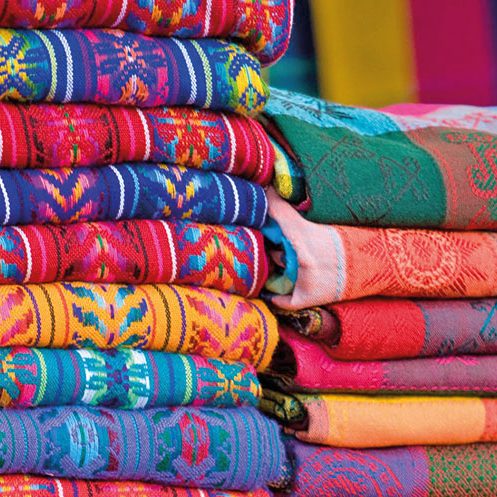
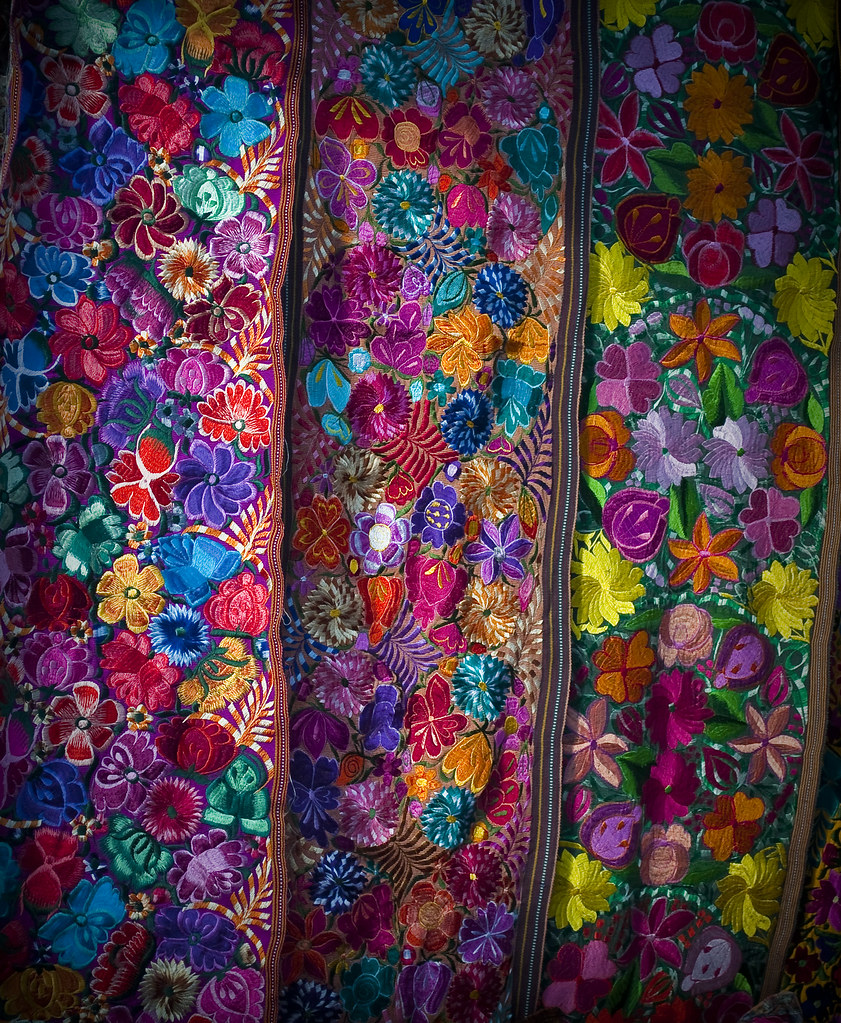
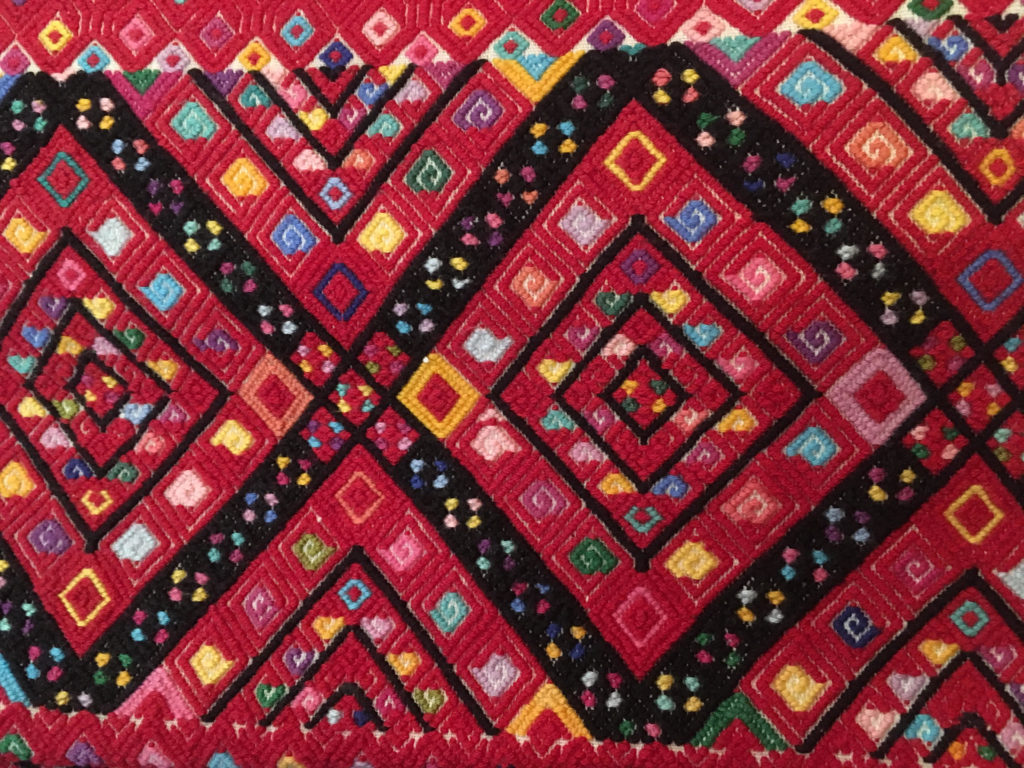
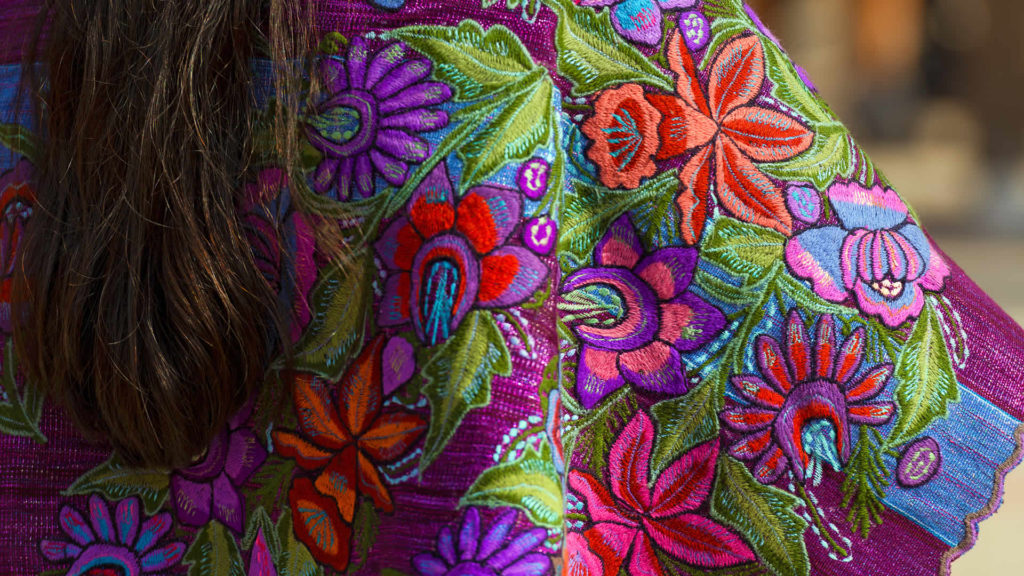
Oaxaca
Ethnic richness in Oaxaca is as vast as its territory, which is comprised of 570 municipalities, where 12 different indigenous communities live. There is an estimate of 300 typical Oaxacan costumes that artisans weave in cotton, wool and silk.
Mixes fabrics have transcended frontiers thanks to their fine flower embroidery. Black and red colors predominate in their designs, which are usually adorned with figures of suns and magueys.
The Chinantec fabrics are infused with vibrant colors, having pieces splashed of red, pink and purple. The meaning of their symbology is related to the origin of the world, and the coexistence of life and death.





Hidalgo
Original from Hidalgo state, Otomí indigenous community are recognized in many parts of the world. The tenangos, which are pieces of white cloth full of embroidery in vivid colors representing natural and animal kingdom’s figures.
Scenes of daily life are present in their garments, so it is very common to see harvesting motifs, important events such as festivities or the Day of the Dead, as well as religious icons.
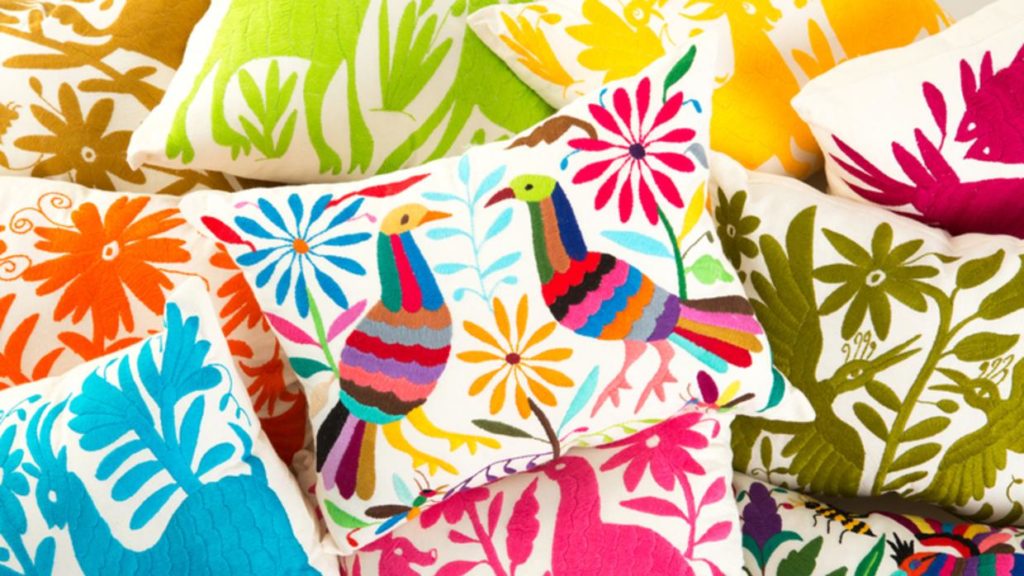
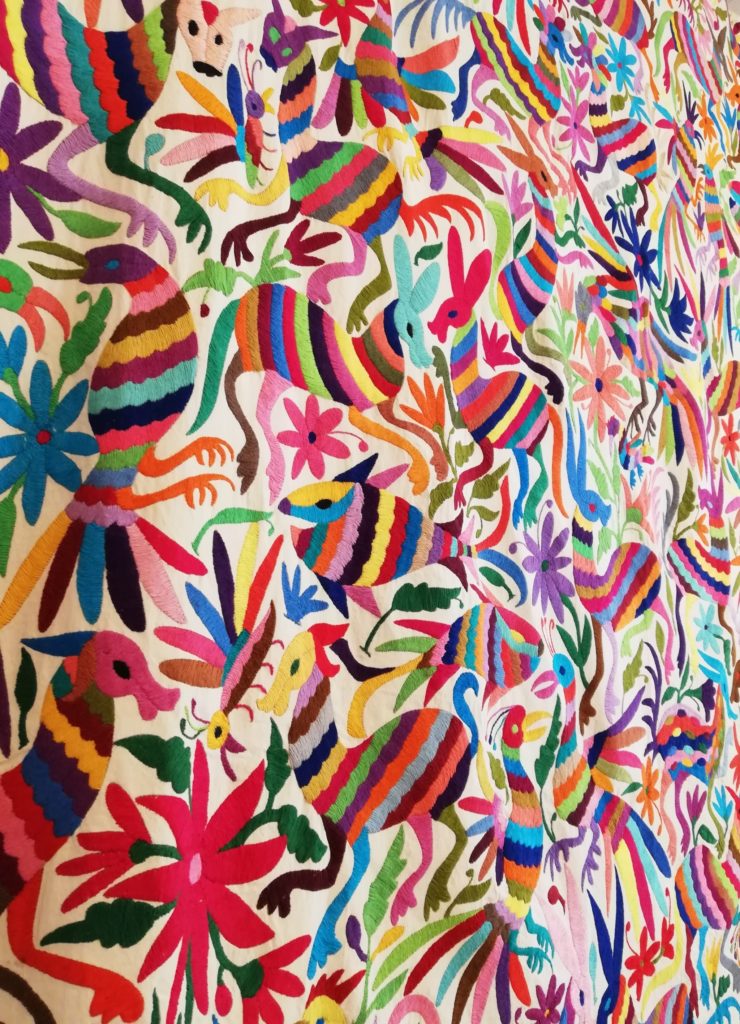
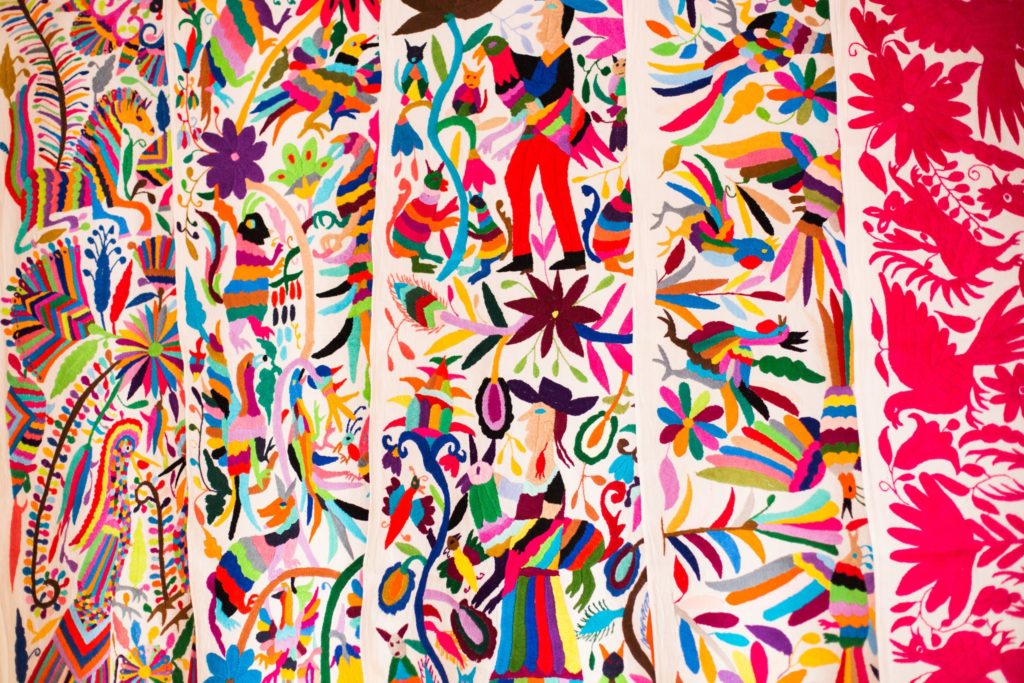
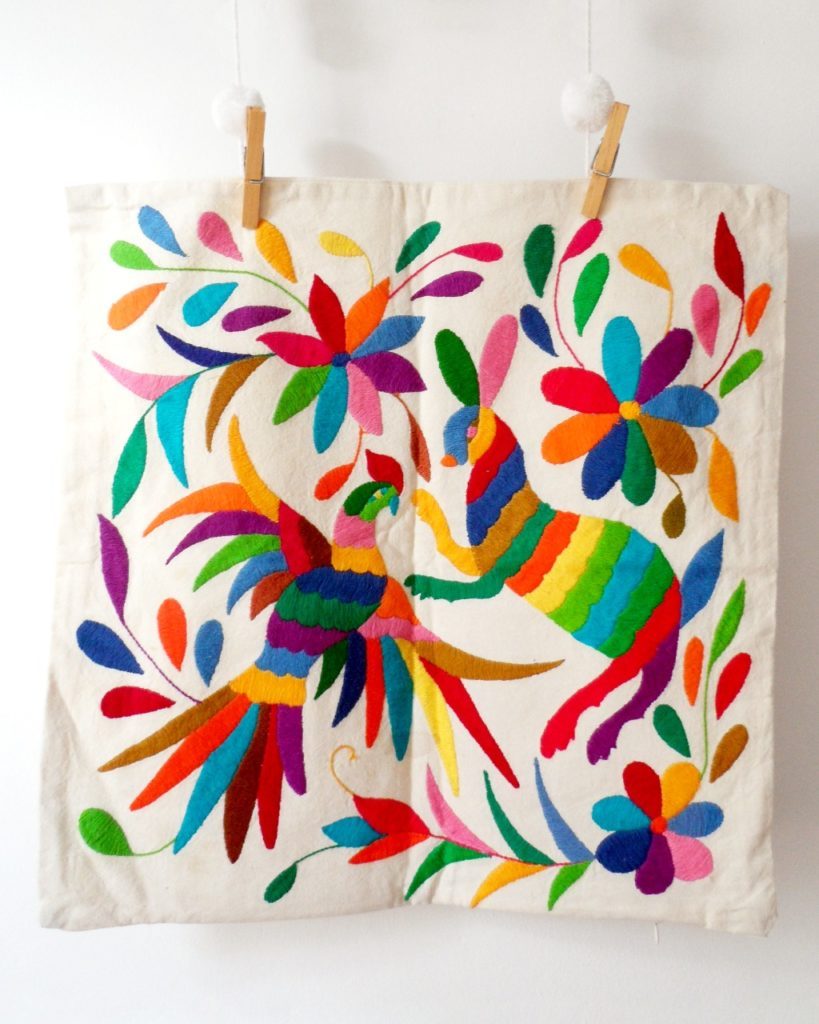
San Luis Potosí
Those of you who know the Potosinean Huasteca, knows that this region is full of impressive natural scenery, showcasing waterfalls, rivers and mountain ranges. Their textile art is a vivid reflection of its privileged environment.
For the Teenek people, the garments worn by women —which are called dhayemlaab and quechquémetl— are considered a sacred object, as they are seen as “cosmological maps” of their ancient traditions and beliefs.
The weavers use cross stitch for their embroidery, shaping trees of life, animals and crosses, among other images.
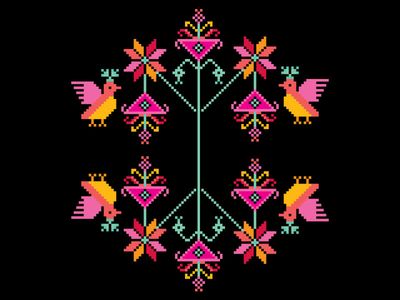
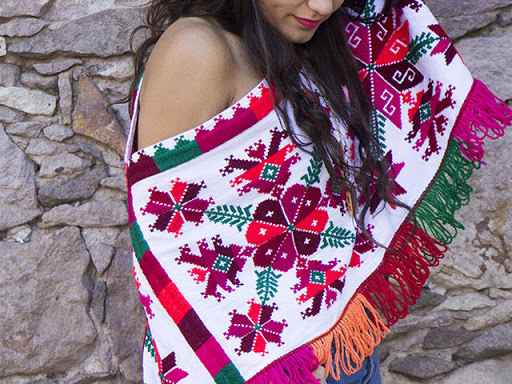
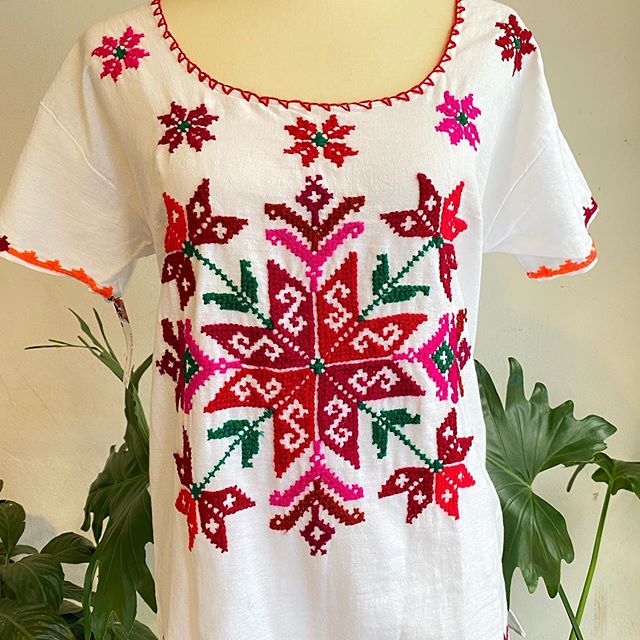
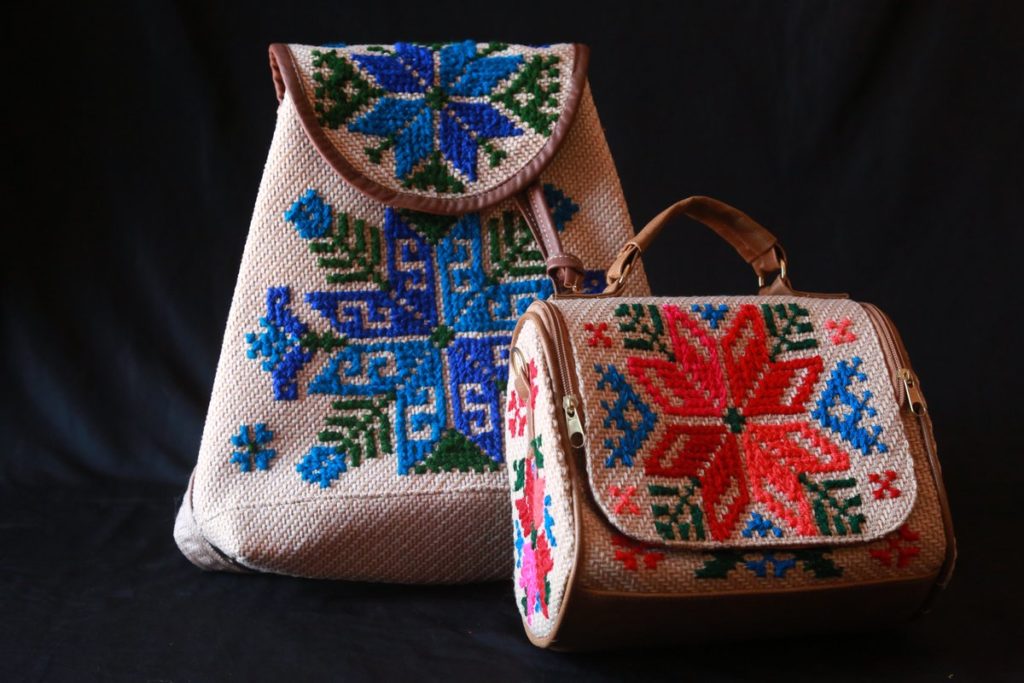
Chihuahua
The Rarámuris of Chihuahua portrait the surroundings and landscapes in their designs. Their textile art highlights the undulating movements of waving water, the pouring rain, swirling whirlpools and spirals in conch shells.
They make use of pedal weavers, and log looms in which they arrange the threads in four pitchforks. Most of their textiles are made of wool, to keep warm up in the mountains, and made of cotton for the cooler areas.
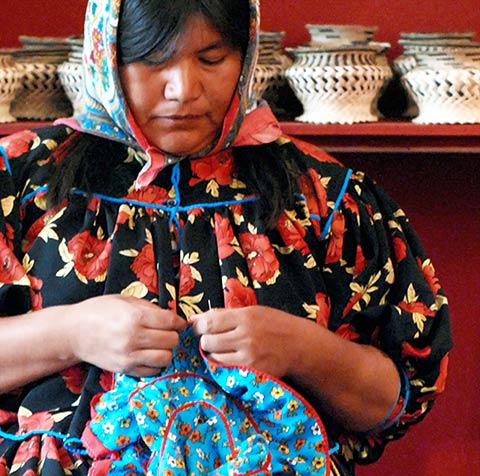
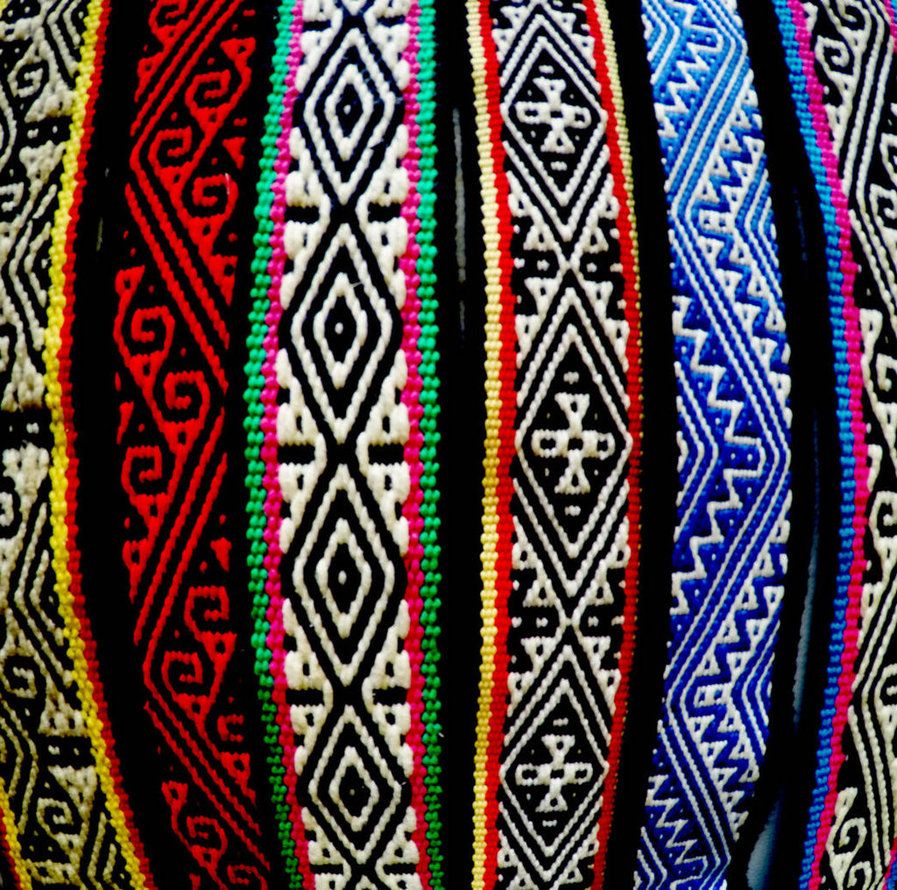
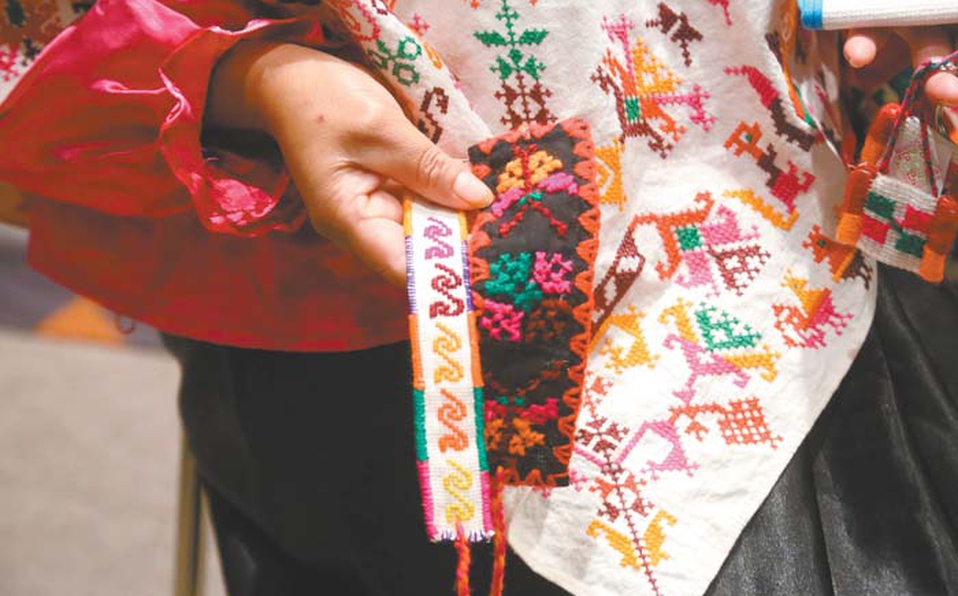
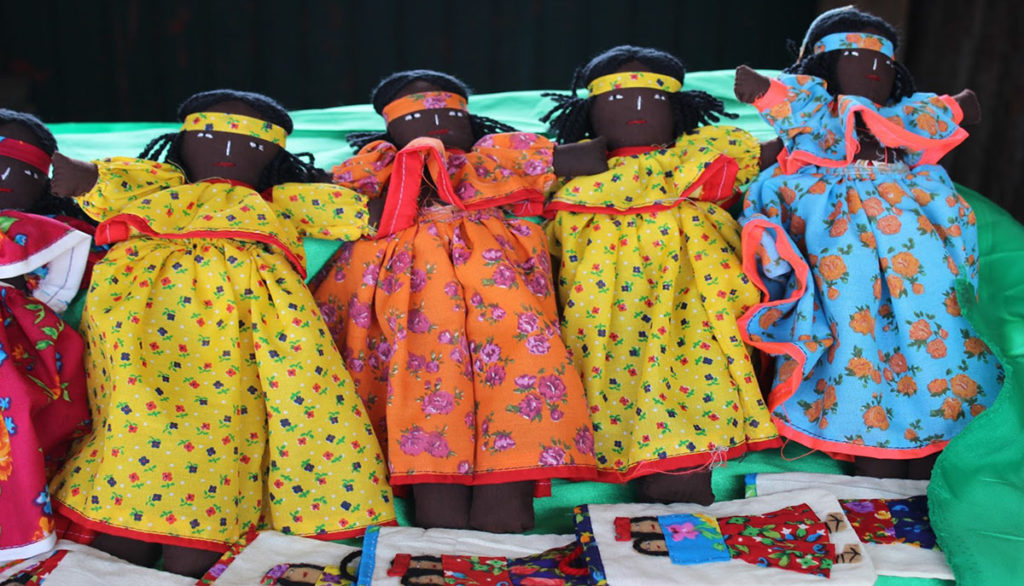
Fascinating, isn’t it?


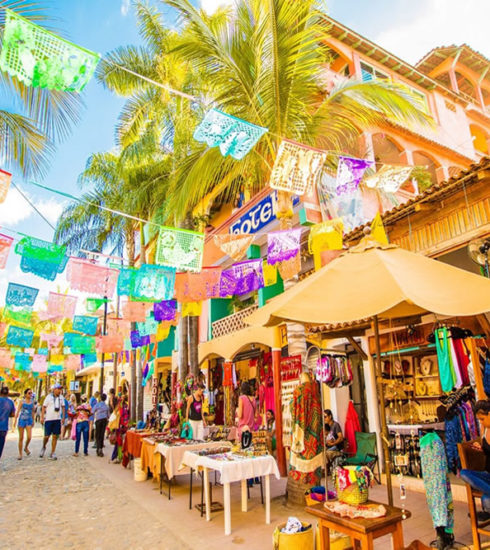
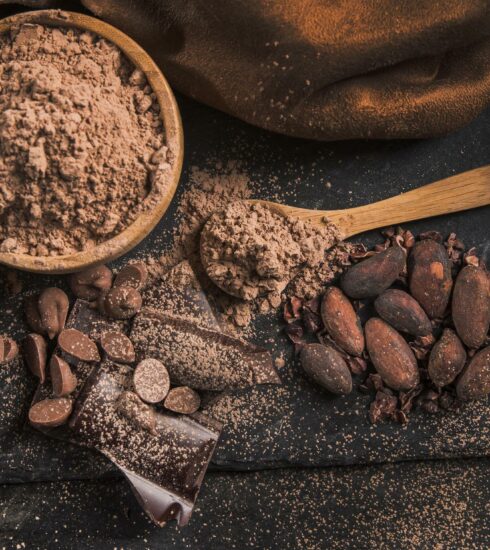
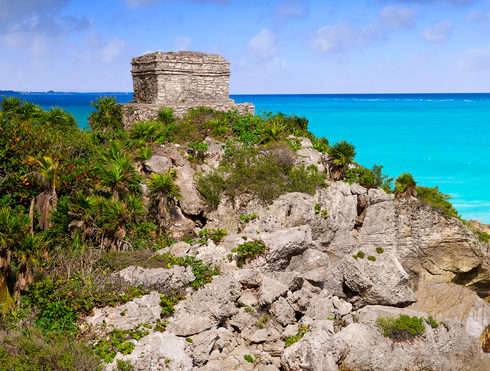
6 Comments
Jack
5 years agoWore a lot of guayaberas in Miami!
Velas Magazine
5 years agoHello Jack! Reaching average temperatures of 88-89°F on summer, Veracruz and Miami have quite similar weather! Linen fabrics are so fresh and designs very beautiful. Thank you for reading! Have a great day today!
Ursela Gerhard
5 years agoI do love the beautiful colorful costumes in all of your dances, plus the dancing too. I also enjoy your food it is good to eat different foods. I have been to several cities in Mexico plus the Copper Canyon. It was a long train adventure . I brought back many home made woven baskets by the local Indians there. I love Puerto Vallarta best so far. I will be back in2021. My Family loves going there too. See you soon.
Velas Magazine
5 years agoSo happy to read you, Ursela! With so many cultures and traditions around our country, there is a lot to be seen and enjoyed! We feel honored Puerto Vallarta is on the top of your list. We will be waiting for your return! In the meantime, please stay safe and healthy.
Jocelyn
4 years agoInteresting! loved this.
Velas Magazine
4 years agoThanks for reading, Jocelyn!